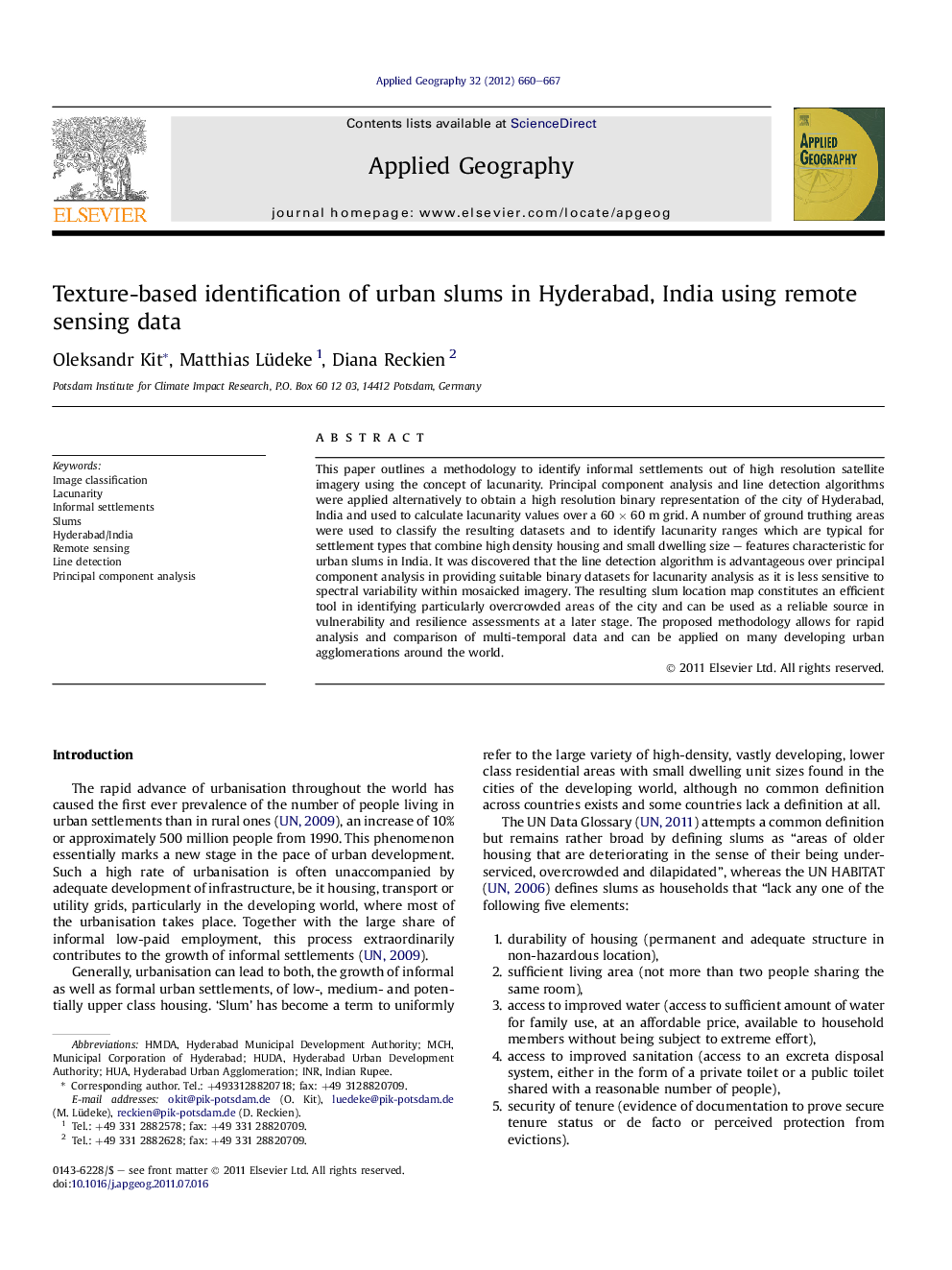| کد مقاله | کد نشریه | سال انتشار | مقاله انگلیسی | نسخه تمام متن |
|---|---|---|---|---|
| 83589 | 158727 | 2012 | 8 صفحه PDF | دانلود رایگان |

This paper outlines a methodology to identify informal settlements out of high resolution satellite imagery using the concept of lacunarity. Principal component analysis and line detection algorithms were applied alternatively to obtain a high resolution binary representation of the city of Hyderabad, India and used to calculate lacunarity values over a 60 × 60 m grid. A number of ground truthing areas were used to classify the resulting datasets and to identify lacunarity ranges which are typical for settlement types that combine high density housing and small dwelling size – features characteristic for urban slums in India. It was discovered that the line detection algorithm is advantageous over principal component analysis in providing suitable binary datasets for lacunarity analysis as it is less sensitive to spectral variability within mosaicked imagery. The resulting slum location map constitutes an efficient tool in identifying particularly overcrowded areas of the city and can be used as a reliable source in vulnerability and resilience assessments at a later stage. The proposed methodology allows for rapid analysis and comparison of multi-temporal data and can be applied on many developing urban agglomerations around the world.
► Remote sensing-based slum monitoring in India is not yet implemented.
► Image lacunarity is a suitable indicator for slum recognition.
► Informal settlements in Hyderabad/India can be identified using lacunarity-based image structure analysis techniques.
Journal: Applied Geography - Volume 32, Issue 2, March 2012, Pages 660–667